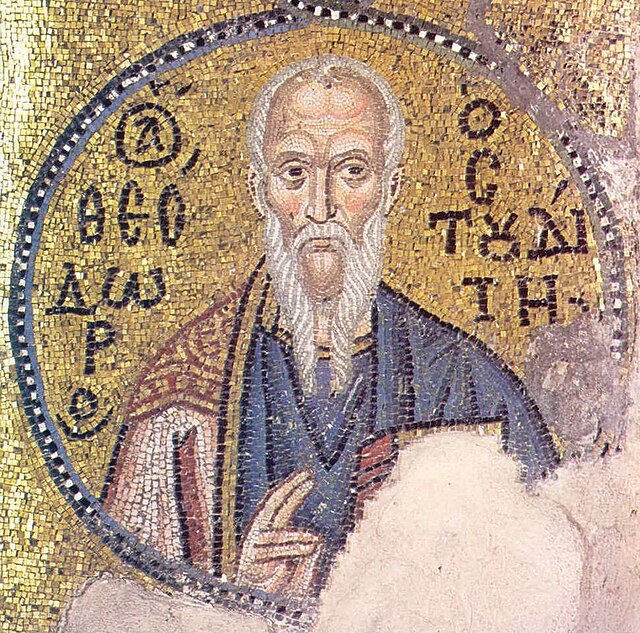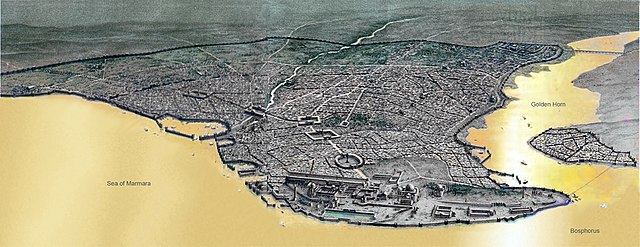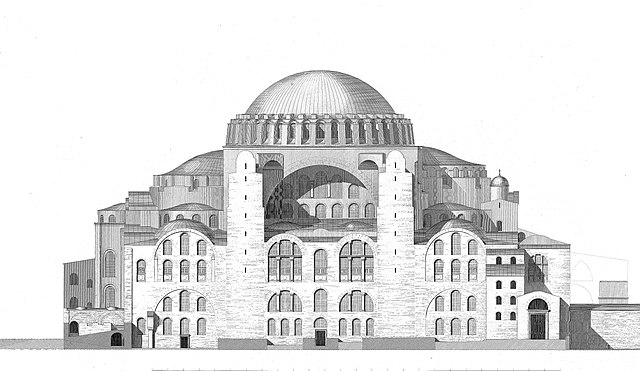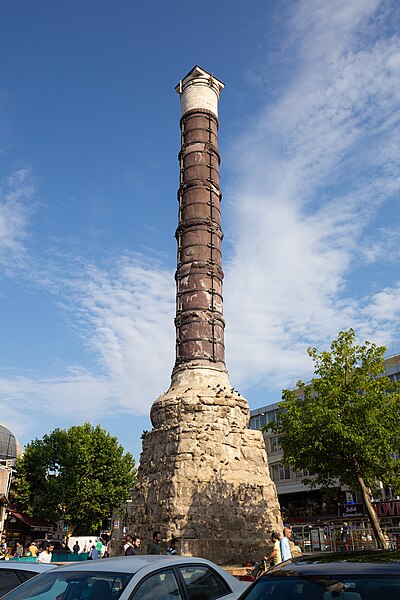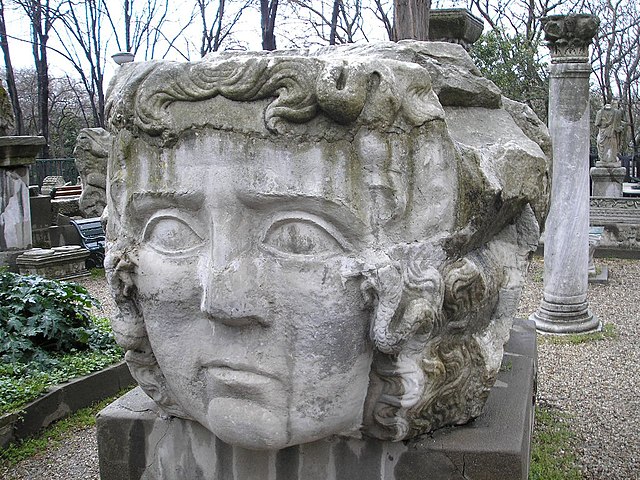The Monastery of Stoudios, more fully Monastery of Saint John the Forerunner "at Stoudios", often shortened to Stoudios, Studion or Stoudion, was a Greek Orthodox monastery in Constantinople, the capital of the Byzantine Empire. The residents of the monastery were referred to as Stoudites. Although the monastery has been derelict for half a millennium, the laws and customs of the Stoudion were taken as models by the monks of Mount Athos and of many other monasteries of the Orthodox world; even today they have influence.
Byzantine miniature depicting the Stoudios Monastery and the Propontis (Sea of Marmara), from the Menologion of Basil II (c. 1000).
Image of St. Theodore the Studite (11th-century mosaic from Nea Moni monastery on Chios).
The interior of the St. John Stoudios (Imrahor) Monastery in February 2017
Street view of the monastery
Constantinople became the capital of the Roman Empire during the reign of Constantine the Great in 330. Following the collapse of the Western Roman Empire in the late 5th century, Constantinople remained the capital of the Eastern Roman Empire, the Latin Empire (1204–1261), and the Ottoman Empire (1453–1922). Following the Turkish War of Independence, the Turkish capital then moved to Ankara. Officially renamed Istanbul in 1930, the city is today the largest city in Europe, straddling the Bosporus strait and lying in both Europe and Asia, and the financial centre of Turkey.
Aerial view of Byzantine Constantinople and the Propontis (Sea of Marmara)
Hagia Sophia built in AD 537, during the reign of Justinian.
The Column of Constantine, built by Constantine I in 330 to commemorate the establishment of Constantinople as the new capital of the Roman Empire
This huge keystone found in Çemberlitaş, Fatih, might have belonged to a triumphal arch at the Forum of Constantine built by Constantine I.


